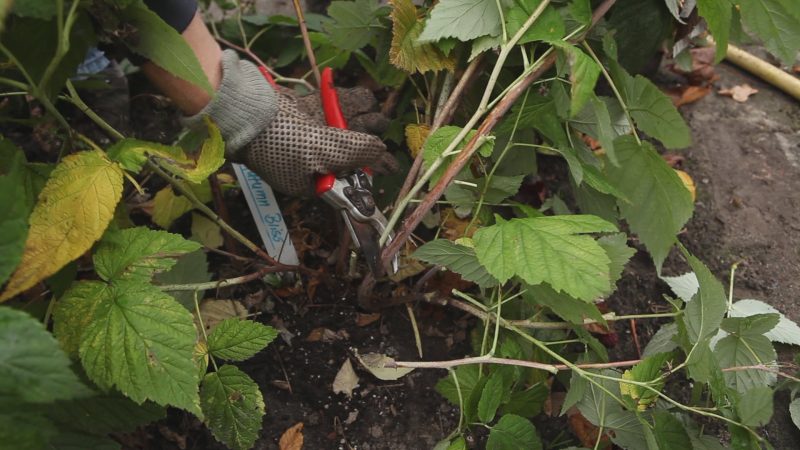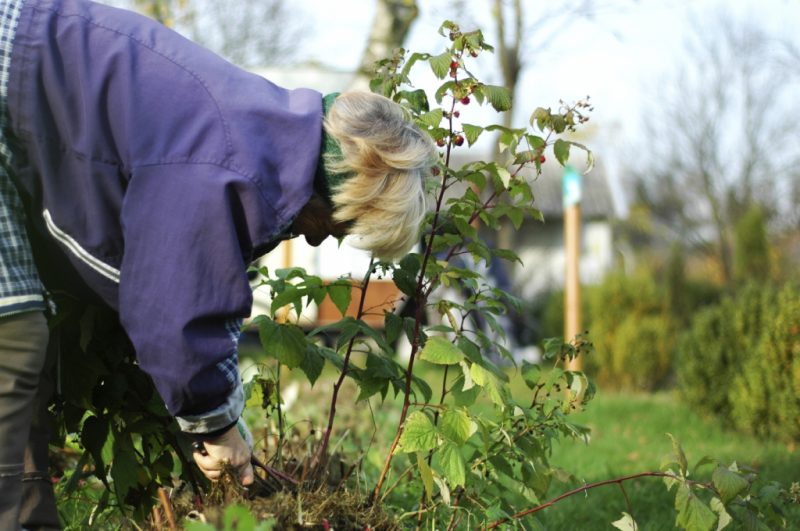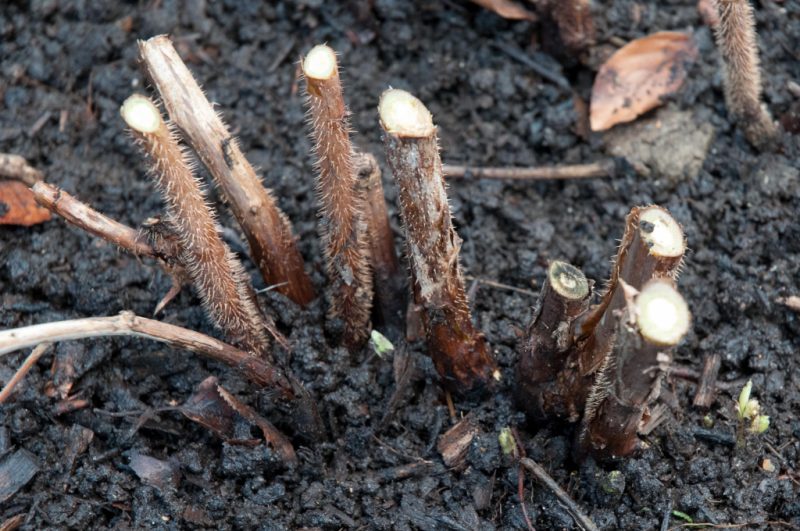Pruning remont raspberries in the fall is one of the essential steps in caring for this crop, which directly affects the quality and quantity of the crop. Therefore, novice gardeners need to know how to do it right.
Material Content:
The need for pruning repair raspberries in the fall
There are several varieties of remont raspberries, but all grow, branch and bear fruit within one year. In other words, culture has a one-year development cycle.

Also, repair raspberries can produce crops on the shoots of the current year in summer and autumn. If the shoots are not cut, but left for the second year, they will bear fruit twice, while the yield will be worse, and the berries will be small and bony in comparison with the fruits from the annual shoot. The summer crop weakens the plant, it consumes too many nutrients, so young shoots do not get them fully. This shifts the time of autumn fruiting, as a result of which some of the berries simply do not have time to ripen.
For this reason, repair raspberries are best grown only for the sake of the autumn harvest. This means good yield, high quality berries, early ovary growth and a minimum of harm from parasites, since the activity phases of the latter simply do not coincide with the phases of plant development.

Therefore, it is better to plant ordinary and maintenance raspberries in the garden.Then in the summer it will be possible to feast on berries from bushes of ordinary raspberries and enjoy the juicy and large fruits of the repairing varieties until frost. Fruiting lasts more than 2 months - from late July to early October (depending on region and variety).
In addition, autumn pruning not only positively affects the quality of the crop, but also protects plants from various parasites that often winter on shoots. Also, gardeners who grow this type of raspberry do not worry whether it freezes in the winter or not. Caring for such a raspberry is easy and simple.
Event Tools
Pruning for the winter is carried out by a sharp garden pruner. It’s better not to save on this tool and immediately buy a high-quality model. Cheap products are made of low-quality steel, which dulls very quickly. Such tools often have a tight mechanism, which is why it is inconvenient to cut the shoots, as the hands get very tired. In addition, you can easily harm yourself and injure your fingers.

A dull blade is very harmful to wood, as it takes on a “chewed” texture. This can lead to the development of putrefactive processes and infection with parasites.
A high-quality secateurs can easily cut branches of any diameter at any height. Strong gloves must also be prepared to protect hands from wounds and scratches. Thorny branches and gloves can not do.
Autumn pruning dates
The best time for pruning is late autumn, before the onset of persistent cold weather, so that nutrients can pass from the shoots to the roots, and the entire crop is harvested. No need to rush to cut raspberries in warm regions. Premature circumcision in warm weather can provoke awakening of sleeping kidneys, which is unnecessary.

But if, due to unforeseen circumstances, it was not possible to cut the shoots in the fall, this must be done in early spring, until the buds open, so that the plant does not waste strength. In the southern regions, it is even recommended to cut raspberries only in the spring, so that the unwanted awakening of sleeping buds does not draw nutrients from the rhizome.
Pruning Raspberry Raspberries - A Beginner's Guide
It may seem to inexperienced gardeners that pruning raspberries is difficult. In fact, this is easy to do. The agricultural technique of growing ordinary raspberries is more difficult, since in cold regions shoots have to be bent and tied so that snow can protect them from frost.

The beginning gardener first needs to decide how he will grow remont raspberries: for summer and autumn harvest or only for late harvest.
In both cases, the technology and terms of trimming differ:
- In the first case, pruning should be carried out both in late autumn and early spring. You need to trim only the part of the shoots where the berries were. The remainder will form a summer crop. Autumn berries will be sung on young annual shoots.
- In the second case, pruning is carried out in November, cutting off all old shoots to the soil level. Only rhizome with sleeping buds remains in the ground, from which young annual shoots will grow in spring.
To obtain a high-quality and plentiful crop, it is better to give preference to the second method.
Stages of pruning bushes for beginners
Cut the shoots completely, under the root, without leaving stumps. Sometimes, due to inexperience, some gardeners leave stumps, from where a weak young shoot appears in the spring, which, moreover, may not inherit its remontance.
Young seedlings in the fall should not be pruned. And in the spring you should not rush into this: you need to wait until the plant gives a strong young shoot of at least 10 cm long. Then you can remove last year's shoot. You can completely cut the seedlings for the second winter.
Care after pruning raspberries in the fall
Care for remont raspberries in the fall consists in timely harvesting, pruning and mulching of plantings for the winter. After trimming, it is imperative to burn the branches and remove the leaves and mulch with a rake, as pests can hide in them. Removing leaves and mulch does not give a chance to survive pathogenic bacteria and pest larvae.

To improve fruiting, raspberries can be covered with a layer of humus no more than 10 cm. This will saturate the soil with useful elements and additionally insulate the roots during wintering.
In warmer regions, shelter for the winter is not required. In areas with harsh and snowy winters, a raspberry plot can be covered with a layer of straw or hay, making a fence around the perimeter from the boards so that the wind does not sweep the shelter. Alternatively, you can use agrofibre.
Knowing how to prune properly, you can not worry about the quality of the crop. The berries will be large, juicy and sweet.












